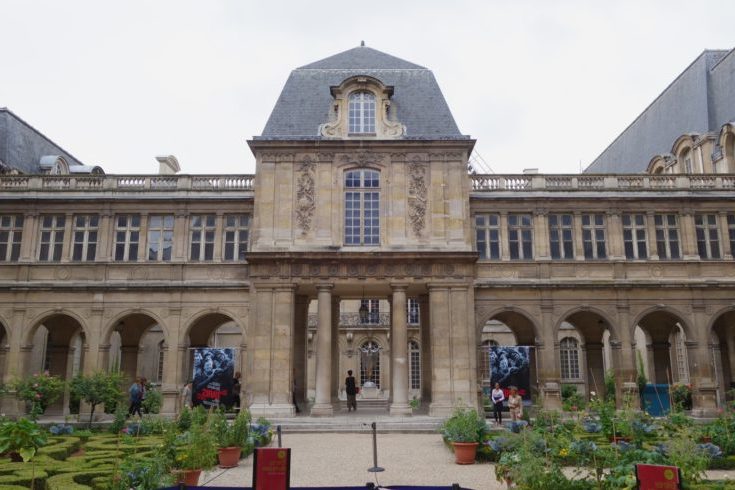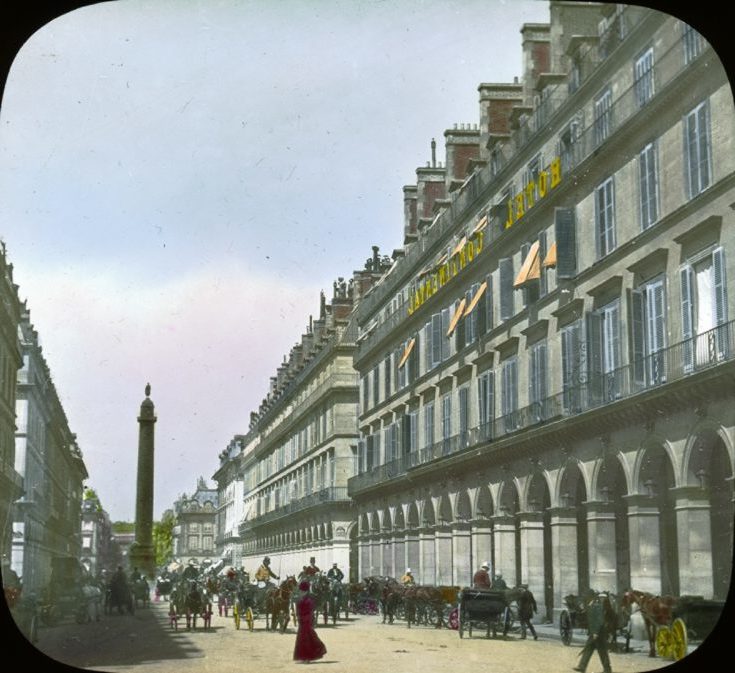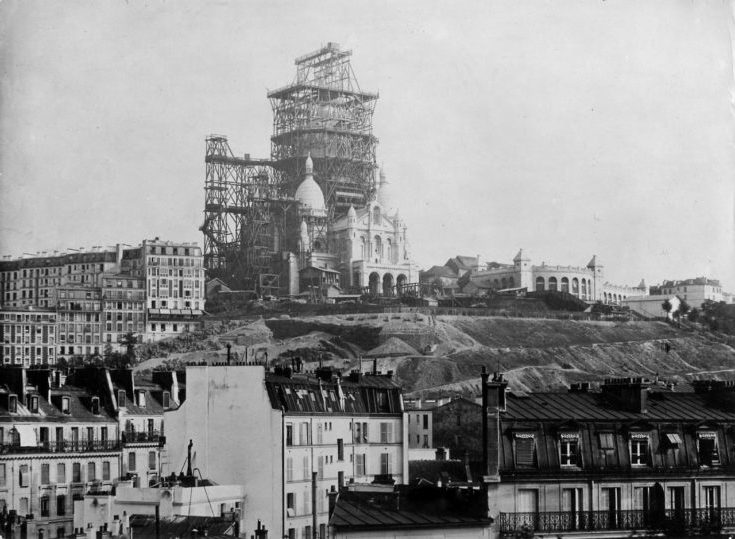The architectural appearance of Paris can be characterized as elegant and unique: in its quarters monuments of different eras harmoniously combine with each other, creating a special atmosphere of the city.
Antiquity and the Middle Ages
Modern Paris grew on the site of the ancient settlement of Lutetia, founded by Celtic tribes in the 3rd century BC and then conquered by ancient Rome. Very few monuments have survived from those years – the ruins of the Thermae of Cluny (now part of the complex of the Museum of the Middle Ages) and the amphitheater of the “Arena of Lutetia”.

In the Middle Ages, Paris became one of the largest cities in Europe: in the XIV century, 300 thousand people lived here. At that time, the capital of France was a complex branching network of narrow winding streets, built up with multi-storey houses made of wooden planks or stone (the latter preferred by wealthy citizens).
Against the background of poor housing and narrow dirty streets, the upward-looking Gothic churches with rich sculptural decoration and magnificent stained-glass windows looked especially majestic. The Cathedral of Saint-Denis, where the tomb of the kings of France is located, and the Cathedral of Our Lady of Paris (Notre-Dame-de-Paris), laid in 1163, but completed only in the XIV century, are made in this style.
Renaissance and subsequent eras
The Franco-Italian wars, which took place in the 16th century, did not bring France military victories, but introduced Parisian aristocrats to the culture of Renaissance Italy. Kings Louis XII and Francis I invited famous Italian sculptors, architects and painters, including the great Leonardo, to their courts.

Through the efforts of masters, the Louvre, formerly a laconically decorated fortress, turned into a luxurious, richly decorated palace. The example of the monarchs was followed by their subjects, who also built elegant mansions, an example of which is Carnavalet, which belonged to the writer Madame de Sévigné.
Work on the improvement of the city continued in the following centuries. Although the kings of France preferred to enjoy life in Versailles, new residential neighborhoods and grand churches were built in Paris, ornate squares were laid out(Vosges, Dauphine), parks were created, and new streets were laid out(Champs-Élysées).

A revolution in urban planning
But it was clearly not enough. Napoleon III, who took the throne after many years in Britain, was horrified by the dirty narrow streets of Paris and the unhealthy atmosphere that prevailed in the city due to the overcrowding of houses where a huge number of inhabitants lived.
The king entrusted the reorganization of the city to his loyal associate Georges Eugène Haussmann, who in 1853 took over the post of perfecteur of the Seine department. Baron energetically took up the cause: soon Paris became like a ruined anthill – almost 80% of the capital’s housing stock was demolished.
On the Isle of Cité, blocks of residential buildings were almost completely demolished and new administrative buildings were erected in their place. Significant changes were made in the layout of the right bank: under Ottoman rule, the design of the Rue de Rivoli and the Place de la Star was completely completed, with 12 wide streets branching off from it in rays.
A new straight north-south axis was created, running along Sevastopol Boulevard and Boulevard Saint-Michel, the Grand Boulevards laid out under Louis XIV were extended and modernized, to which were added new boulevards Richard-Lenoir, Haussmann and others. The streets were built up with five- and four-storey residential buildings with facades of light stone, certain requirements to the parameters of buildings were also imposed for the construction of private mansions.
The baron’s activity was not limited to the reorganization of the streets: under him were built nine bridges over the Seine, the picturesque parks of Butt-Chaumont, Monsouri, Vincennes and Bois de Boulogne forests. With the efforts of city planners, water supply and sewerage systems were installed in the city, trees were planted, and drinking water fountains were arranged.
It was under Ottoman rule that Paris acquired a modern look with wide comfortable boulevards and avenues abundantly decorated with greenery and flowers.
New times and modern projects
Already after Ousmane’s death, the image of Paris was completed with two architectural dominants: in 1889 for the World Exhibition was built “iron lady” – 300-meter Eiffel Tower, and by 1914 on the hill of Montmartre was erected snow-white Cathedral Sacre-Coeur, made in Byzantine style.
Large-scale projects to redevelop Paris were also undertaken in the second half of the last century. Between 1969 and 1972, the 210-meter-high Montparnasse Tower was built, which is the tallest skyscraper within the French capital.
In 1977, the Pompidou Center was opened, which houses the Museum of Modern Art, a huge library, concert and exhibition halls, and a research center. Initially, the public was wary of the unusual design of the building, which looked more like an oil refinery. However, very quickly citizens and tourists got used to the original structure, which is now one of the most popular attractions of the city.
The symbol of the new Paris is considered to be the business quarter of Defence, whose skyscrapers house numerous offices and headquarters of famous companies. The most famous structure of this architectural ensemble is the Grande Arche, which is on the same axis as the other two famous arches of Paris, the Carousel and the Arc de Triomphe. The monumental cube-shaped structure with a height of 112 meters is finished with plates of special glass with white Carrara marble and gray granite.
Architects not only create new buildings, but also give new life to old structures. A brilliant example is the Musée d’Orsay, opened in 1986 in the space of an abandoned train station.
- Transferts in Paris
- Private Paris City Tour
- Private Tour to Champagne
- Private Tour to Normandy
- Private Tour Loire Vallley Castles
- Private Tour Mont St Michel
- Private Tour to Bruges











